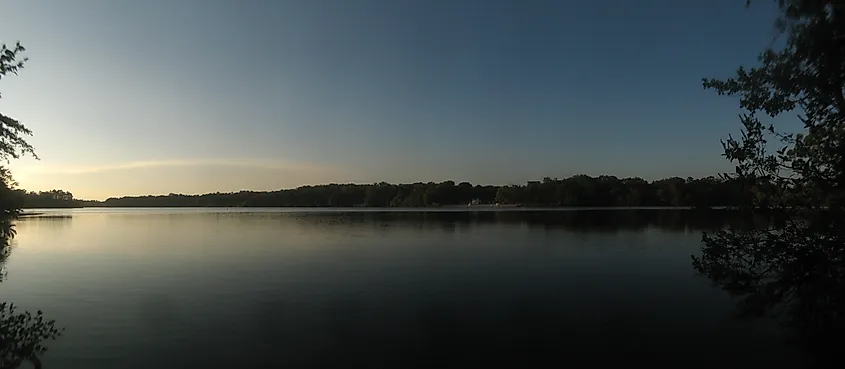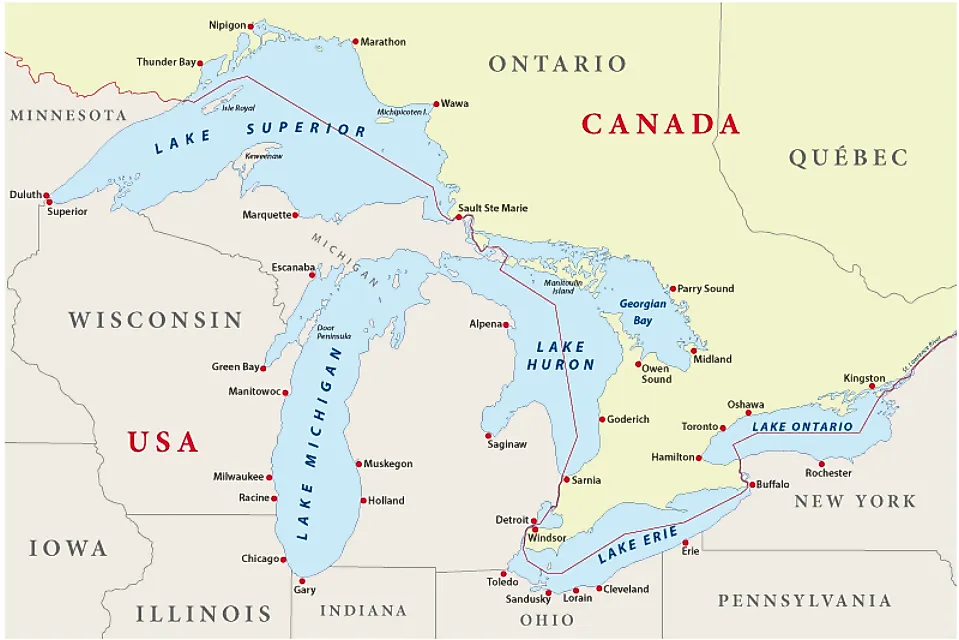
5 Most Snake-Filled Bodies Of Water In New Jersey
New Jersey’s various lakes, rivers, and wetlands are full of life, including reptiles like turtles, lizards, and snakes. We will focus on the snakes, and while venomous species are rare in the state, non-venomous snakes like the northern water snake are widespread and often encountered by hikers, boaters, and fishermen alike.
New Jersey is home to a variety of snake species, both venomous and non-venomous, thriving in diverse habitats across the state. The eastern timber rattlesnake is the only venomous snake in New Jersey, found primarily in the state's rural and wooded areas. Non-venomous species include the black rat snake, garter snake, and northern water snake, all of which are beneficial for controlling pests. Snakes in New Jersey generally avoid humans and are more active in warmer months. Though often feared, most of New Jersey's snakes are harmless and play important roles in maintaining ecological balance.
Today, we would like to identify the five most snake-filled bodies of water in New Jersey, locations where sightings are frequent and snake-human encounters are a regular part of the landscape. With this knowledge in hand, you may either avoid or seek out these hotspots, whether or not you're a fan of these slithering critters!
Merrill Creek Reservoir

Merrill Creek Reservoir, a 650-acre manmade lake in western New Jersey, is a hotspot for sport fishing. While it draws both anglers and boaters to its clean, deep waters, the surrounding forested buffer zone and undeveloped shoreline make it prime habitat for snakes in this northwestern part of the state.
Northern water snakes are commonly spotted along the rocky edges in the area, especially during warm months when they bask in the open after their long winter hibernation. These non-venomous snakes are often mistaken for copperheads due to their sometimes-similar markings, but don't worry, true venomous species are not typically found here. You may also spot Rough green snakes and eastern milk snakes, also nonvenomous.
Visitors hiking the perimeter trail or fishing from the shore are most likely to encounter them, so be sure to watch your step, especially through thick grasses.
Manasquan Reservoir

Located in Howell Township, the 770-acre Manasquan Reservoir is one of central New Jersey’s most heavily used recreational lakes, and also one of its most snake-active. Due to its high foot traffic, this body of water stands out for the sheer number of interactions, as opposed to simply having larger populations than other areas
The extensive wetlands, coves, and flora-covered banks support a robust population of northern water snakes, especially near the fishing and wildlife observation areas that people frequent. Furthermore, the park’s over 5-mile perimeter trail offers multiple points of contact with these reptiles, particularly near the marshy inlets and boardwalk sections. Sightings increase in late spring and summer when snakes hunt for some of their favorite foods, frogs and small fish, in the shallows.
Parvin Lake

Parvin Lake, part of Parvin State Park in southwestern New Jersey, is surrounded by swampy lowlands, cedar forests, and slow-moving tributaries, a perfect place for snakes! Like most parts of the state, the lake and adjacent waterways host a high number of northern water snakes, which are commonly seen along the edges of the boat launch, swimming near docks, or sunning on rocks and logs.
The mix of still water, abundant vegetation, and nearby marshes also attracts ribbon snakes and eastern garter snakes, both of which thrive in this wetland-heavy habitat. Parvin’s location near New Jersey's Pine Barrens further contributes to the density of reptile life, especially making it a reliable destination for the critters who prefer living on land, too.
Lake Hopatcong

As New Jersey’s largest freshwater lake, Lake Hopatcong covers over 2,500 acres and supports a wide range of aquatic and shoreline wildlife of all sorts. With very favorable conditions for northern water snakes, which are frequently observed by boaters, cottage owners, and shoreline anglers, swimmers encounter the local populations probably more than anyone else.
Snake activity tends to spike during late spring and summer, especially in quieter inlets like Woodport and Great Cove. Reports of non-native species are also unfortunately common here. A remarkable one involves a 16-foot giant green anaconda, having been allegedly seen in its waters a number of years back! You might be relieved to hear that the story was widespread but never officially confirmed by authorities.
While the lake’s popularity as a recreation spot keeps some wildlife at bay, the combination of habitat diversity and size makes Lake Hopatcong a consistent location for snake sightings in northern New Jersey.
Mullica River

The Mullica River flows for over 50 miles through the heart of the Pine Barrens and out into Great Bay and the Atlantic Ocean beyond, housing perhaps the largest variety of snakes in New Jersey. Its slow-moving current, tidal marshes, and densely wooded banks make way for habitat for several snake species, including eastern king snakes, ribbon snakes, corn snakes, black racers, and, of course, northern water snakes.
The river’s remote stretches, particularly near Wharton State Forest and lower reaches around the community of Sweetwater, offer minimal human interference, allowing several different kinds of reptile populations to thrive.
Unlike more developed lakes, the Mullica’s wild setting and extensive wetland buffers make encounters less frequent, only really open to those exploring on small craft of secluded trails.
Know Where to Find New Jersey's Snakes
Whether you're drawn to the water for recreational activities or simply just want to explore New Jersey's wildland, it helps to know which areas see the most snake activity, such as the state's five most snake-filled bodies of water. While most of the state's snakes are harmless, this info may be more or less for their protection rather than yours. Understanding where these reptiles thrive allows for better ecological stewardship, helping to maintain the natural environment's delicate balance, from man-made reservoirs to the quiet Pine Barrens and beyond.











